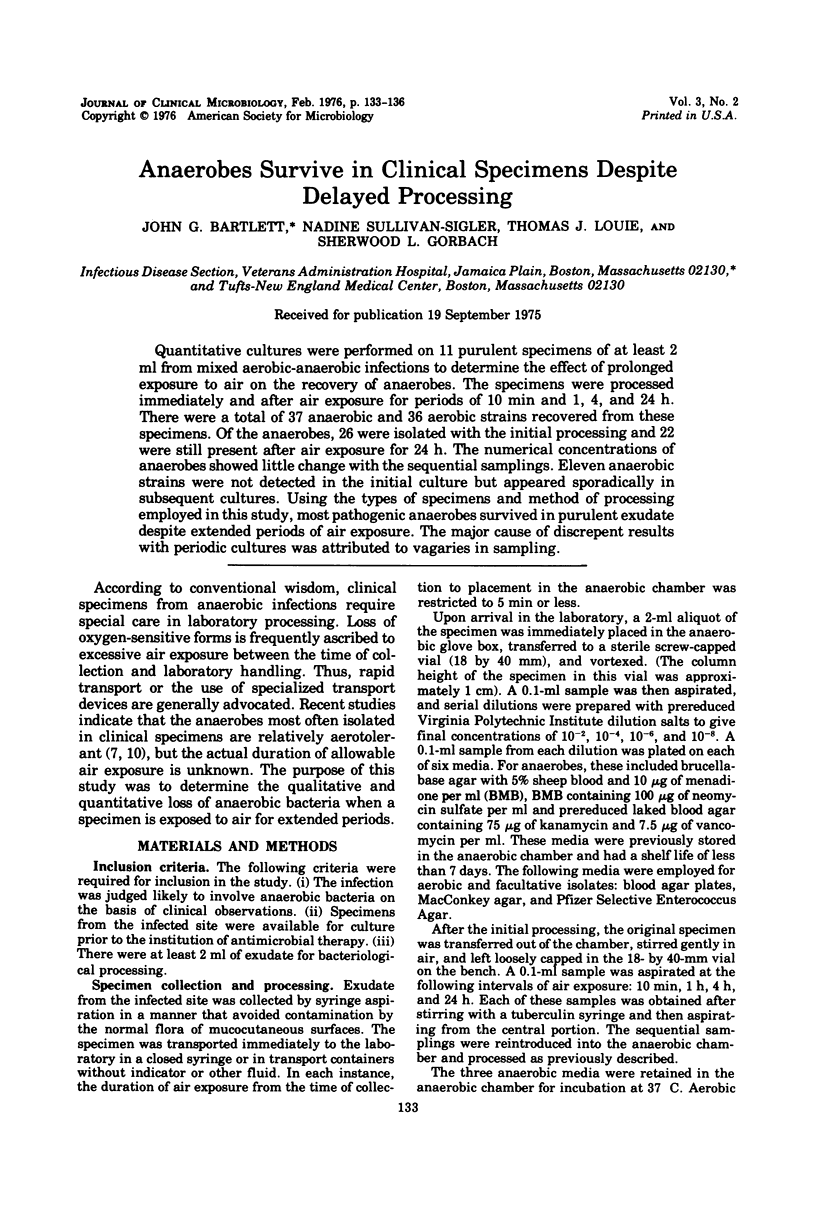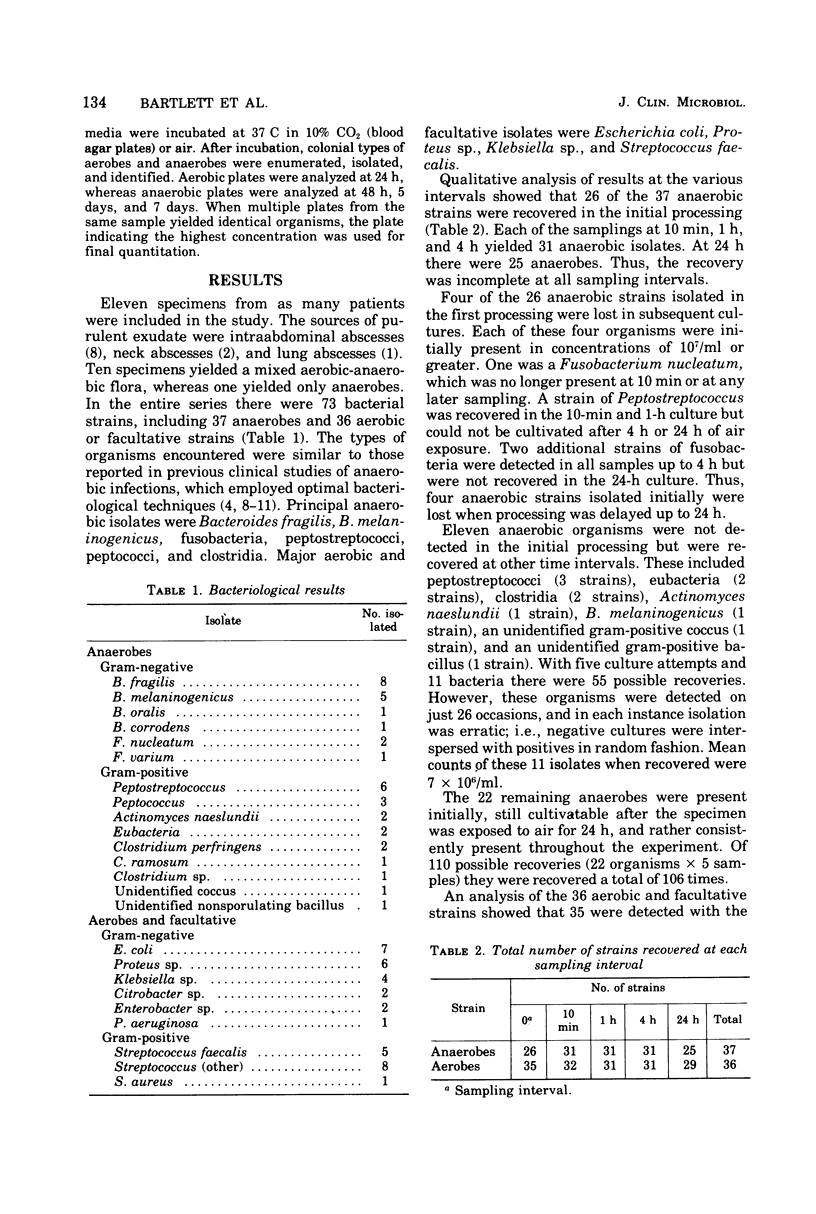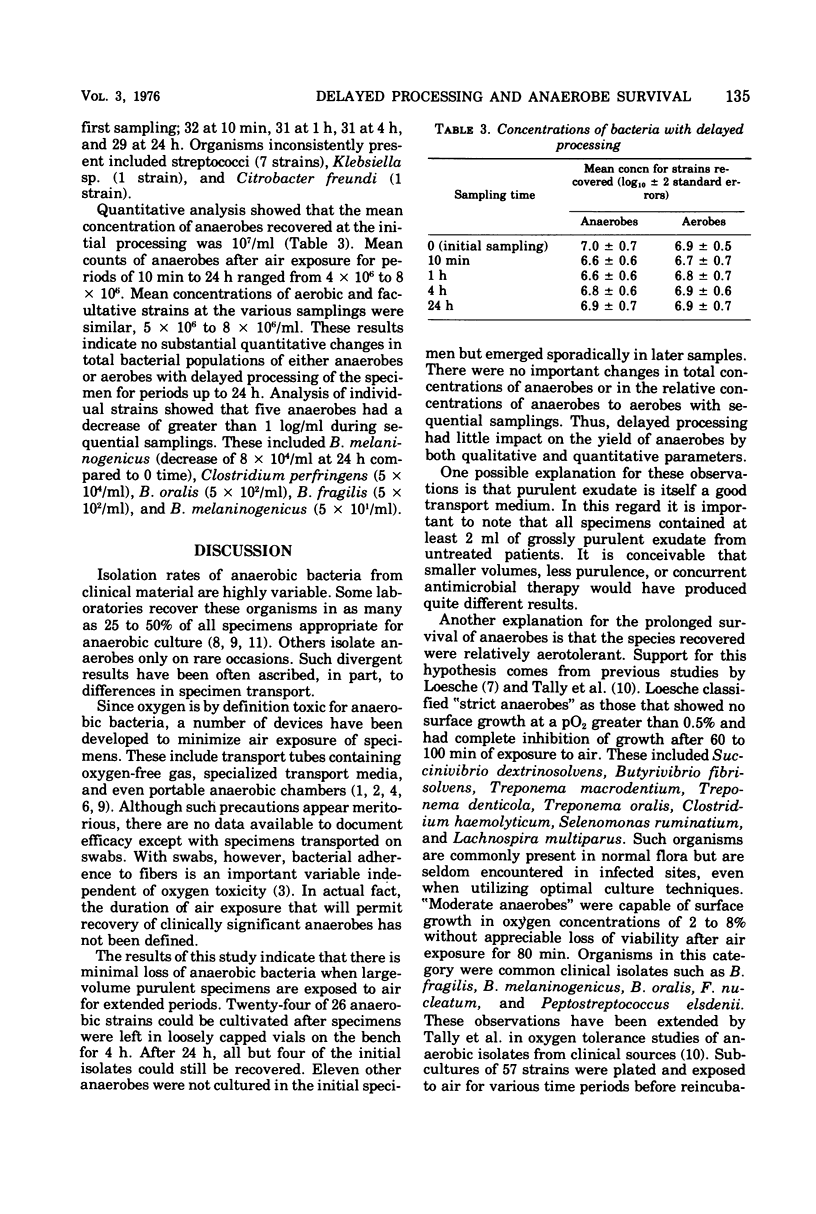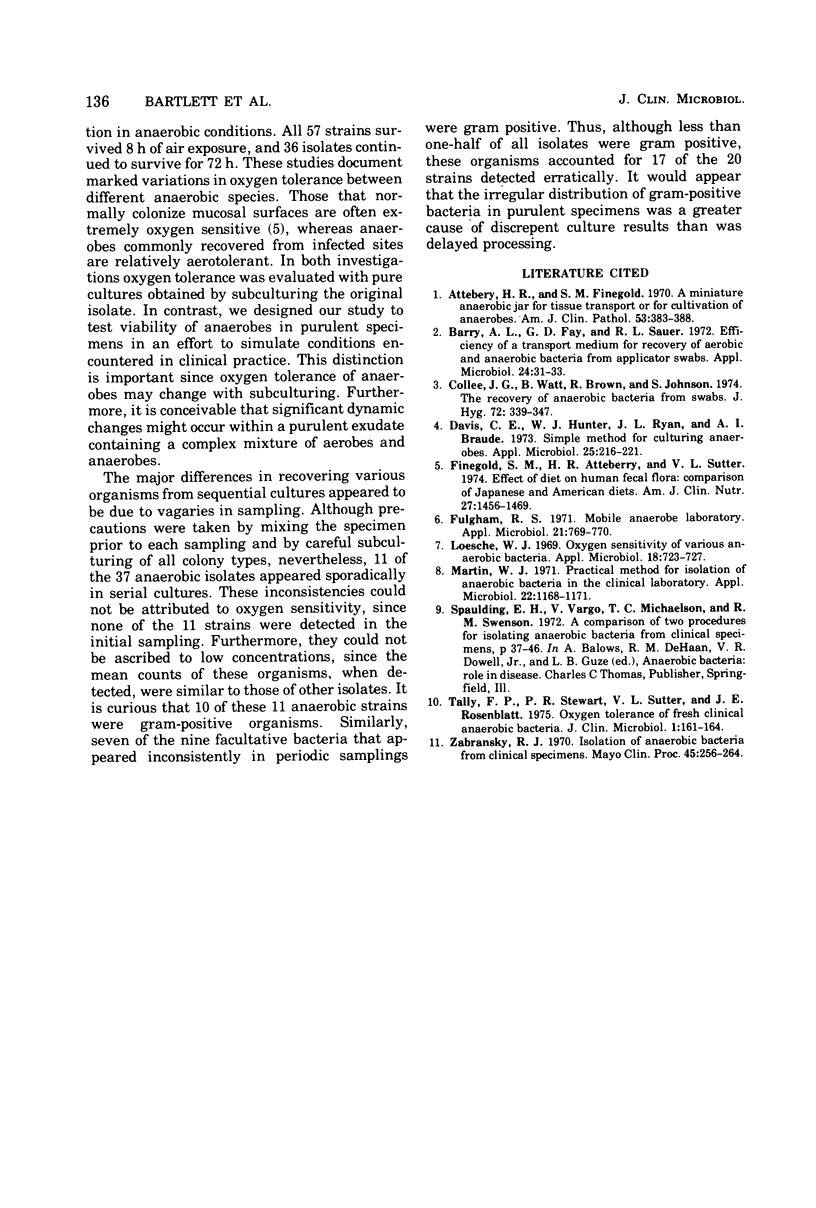Abstract
Quantitative cultures were performed on 11 purulent specimens of at least 2 ml from mixed aerobic-anaerobic infections to determine the effect of prolonged exposure to air on the recovery of anaerobes. The specimens were processed immediately and after air exposure for periods of 10 min and 1, 4, and 24 h. There were at total of 37 anaerobic and 36 aerobic strains recovered from these specimens. Of the anaerobes, 26 were isolated with the initial processing and 22 were still present after air exposure for 24 h. The numerical concentrations of anaerobes showed little change with the sequential samplings. Eleven anaerobic strains were not detected in the initial culture but appeared sporadically in subsequent cultures. Using the types of specimens and method of processing employed in this study, most pathogenic anaerobes survived in purulent exudate despite extended periods of air exposure. The major cause of discrepent results with periodic cultures was attributed to vagaries in sampling.
Full text
PDF



Selected References
These references are in PubMed. This may not be the complete list of references from this article.
- Attebery H. R., Finegold S. M. A miniature anaerobic jar for tissue transport or for cultivation of anaerobes. Am J Clin Pathol. 1970 Mar;53(3):383–388. doi: 10.1093/ajcp/53.3.383. [DOI] [PubMed] [Google Scholar]
- Barry A. L., Fay G. D., Sauer R. L. Efficiency of a transport medium for the recovery of aerobic and anaerobic bacteria from applicator swabs. Appl Microbiol. 1972 Jul;24(1):31–33. doi: 10.1128/am.24.1.31-33.1972. [DOI] [PMC free article] [PubMed] [Google Scholar]
- Collee J. G., Watt B., Brown R., Johnstone S. The recovery of anaerobic bacteria from swabs. J Hyg (Lond) 1974 Jun;72(3):339–347. doi: 10.1017/s0022172400023561. [DOI] [PMC free article] [PubMed] [Google Scholar]
- Davis C. E., Hunter W. J., Ryan J. L., Braude A. I. Simple method for culturing anaerobes. Appl Microbiol. 1973 Feb;25(2):216–221. doi: 10.1128/am.25.2.216-221.1973. [DOI] [PMC free article] [PubMed] [Google Scholar]
- Finegold S. M., Attebery H. R., Sutter V. L. Effect of diet on human fecal flora: comparison of Japanese and American diets. Am J Clin Nutr. 1974 Dec;27(12):1456–1469. doi: 10.1093/ajcn/27.12.1456. [DOI] [PubMed] [Google Scholar]
- Fulghum R. S. Mobile anaerobe laboratory. Appl Microbiol. 1971 Apr;21(4):769–770. doi: 10.1128/am.21.4.769-770.1971. [DOI] [PMC free article] [PubMed] [Google Scholar]
- Loesche W. J. Oxygen sensitivity of various anaerobic bacteria. Appl Microbiol. 1969 Nov;18(5):723–727. doi: 10.1128/am.18.5.723-727.1969. [DOI] [PMC free article] [PubMed] [Google Scholar]
- Martin W. J. Practical method for isolation of anerobic bacteria in the clinical laboratory. Appl Microbiol. 1971 Dec;22(6):1168–1171. doi: 10.1128/am.22.6.1168-1171.1971. [DOI] [PMC free article] [PubMed] [Google Scholar]
- Tally F. P., Stewart P. R., Sutter V. L., Rosenblatt J. E. Oxygen tolerance of fresh clinical anaerobic bacteria. J Clin Microbiol. 1975 Feb;1(2):161–164. doi: 10.1128/jcm.1.2.161-164.1975. [DOI] [PMC free article] [PubMed] [Google Scholar]
- Zabransky R. J. Isolation of anaerobic bacteria from clinical specimens. Mayo Clin Proc. 1970 Apr;45(4):256–264. [PubMed] [Google Scholar]


